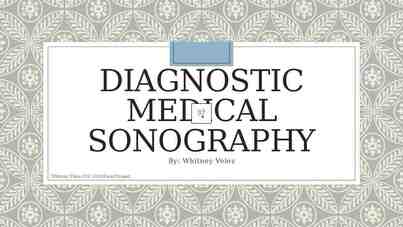Chapter 9 Motivating the Channel Members
21 Slides375.00 KB
Chapter 9 Motivating the Channel Members
Motivation Management Motivation Management: he actions taken by the manufacturers to oster channel member cooperation in mplementing the manufacturer’s istribution objectives Compliance ctive Representation 9
This is a Serious Problem! 1. 9 Manufacturers spend more than 70B for trade promotion 2. 85% of the manufacturers believe that the money given to retailers is ineffectively spent 3. Retailers say that 40% of all manufacturer-supplied POP displays are never used.
9 Motivating Channel Members Basic Framework 1.Find out the needs and problems of channel members. 2.Offer support to the channel members that matches with their needs and problems. 3.Provide leadership through the effective use of power.
I. Finding Out Channel Member Needs & Problems Approaches for learning about member needs & problems*: 1. 1. Research Researchstudies studies of ofchannel channelmembers members 2. 2. Research Researchstudies studies by byoutside outsideparties parties 3. 3. Marketing Marketingchannel channelaudits audits 4. 4. Distributor Distributoradvisory advisorycouncils councils Feedback Feedback from from Your Your Salesforce Salesforce 9
1. Research Studies of Channel Members 9 ss than 1 percent of manufacturers’ research udgets is spent on channel member research! BUT: BUT: Manufacturer-initiated Manufacturer-initiated research research can can be be useful useful because because certain certain types types of of needs needs or or problems problems may may not not be be at at all all obvious. obvious.
2. Research Studies by Outside Parties Why use outside parties to conduct research? (Such as a thirdparty research firm) They provide a higher assurance of objectivity. They provide a level of expertise that the manufacturer may not possess. 9
3. Marketing Channel Audits 9 Focus of channel manager’s approach: Gather Gatherdata dataon onhow howchannel channelmembers members perceive perceivethe themanufacturer’s manufacturer’smarketing marketing program programand andits itscomponent componentparts. parts. Locate Locatethe thestrengths strengthsand andweaknesses weaknesses in inthe therelationships. relationships. Learn Learnwhat whatisisexpected expectedof of manufacturers manufacturers to tomake makethe thechannel channelrelationship relationshipviable viable and andoptimal. optimal.
Marketing Channel Audits 9 What makes marketing channel audits most effective? It should It must identify and define be conducted in detail the issues periodically so relevant to the as to capture manufacturertrends & Issues chosen for reseller patterns. the audit should relationship. be crossreferenced to any relevant variables.
4. Distributor Advisory Councils 9 Who is involved? Top management representatives from the manufacturer and from the channel members What are the benefits? Provides recognition for the channel members Provides a vehicle for identifying and discussin mutual needs and problems Results in an overall improvement of channel communications
II. Offering Support to the Channel Members 1. Cooperative Arrangements 2. 3 Types of Channel Programs Partnership or strategic alliance 3. Distribution programming 9
Relationship Differences 9 ooperative Arrangements Intermittent(irregular) interactions between manufacture & channel members Partnerships & Strategic Alliances Continuing & mutually supportive relationship Distribution Programming Deals with virtually all aspects of the channel relationship
1. Cooperative Arrangements 9 - Focuses on channel member needs & problems - Simple & straightforward - Conveys a clear sense of mutual benefit
Cooperative Arrangements Typical types of cooperative programs provided by Manufacturers to channel members Cooperative advertising allowances Payments for interior displays Contests for buyers, salespeople, etc. Allowances for warehousing functions Payments for window display space Detail men who check inventory Demonstrators Coupon-handling allowance Free goods (See more in table 9.2) 9
2. Partnerships & Strategic Alliances Focus on a continuing and mutually supportive relationship between the manufacturer and its channel members 9
Partnerships & Strategic Alliances 9 Three basic phases . Manufacturer should make explicit statement of policies in areas such as product availability, technical support, pricing, etc. 2. Manufacturer should assess all existing distributors as to their capabilities for fulfilling their roles 3. Manufacturer should continually appraise the appropriateness of the policies guiding his or her relationship with the channel members
Strategic Distribution Alliance Characteristics – Enduring connections – Substantial connections What sets SDA apart from others – Trust – Commitment Norm-based Motivation (Solidarity, Mutuality, Continuity) Building Commitment – Expectation of continuity – Bilateral communication – Balanced Power between the two Commitment is mutual 17
3. Distribution Programming 9 A comprehensive set of policies for the promotion of a product through the channel - Developed as a joint effort between the manufacturer and the channel members to incorporate the needs of both - Offer all channel members advantages of vertically integrated channel and allow them maintaining their status as independent business firms Ex) Dealership and Franchising
Distribution Programming 9 Steps for developing a program: 1. Analysis of marketing objectives & the kinds of levels of support needed from channel members Ascertains channel members’ needs & problem areas 2. Formulate specific channel policies that offer (see more in Table 9.4): Price concessions to channel members Financial assistance Some kind of protection for channel members
III. Providing Leadership to Motivate Channel Members Regardless of which approach the channel manager uses to motivate channel members, leadership must still be exercised on a continuing basis if motivation programs are to operate effectively and viably. 9
Providing Leadership to Motivate Channel Members In attempting to exercise such leadership, however, the channel manager must remember to deal with several significant challenges characteristic of the interorganizational setting of marketing channel. Among these are: 1. The looseness of the organization of many channel systems 2. A proclivity (tendency) by channel members to avoid central direction 3. Lack of single ownership 4. No clear demarcation (separation) of a superior subordinate relationship 9


























